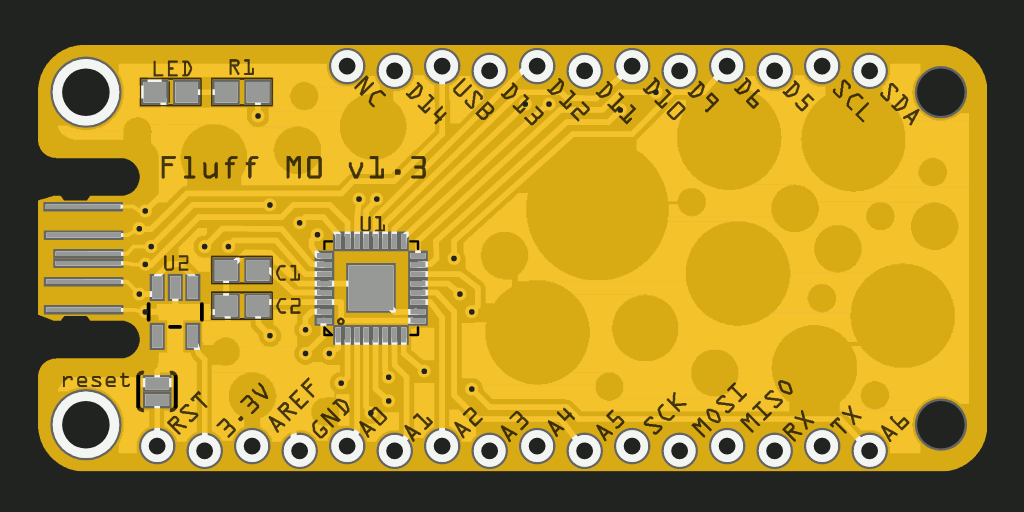Version 1.3 and USB Type-C¶
Published on 2020-06-03 in Fluff M0.
I’m still waiting for the PCB for the fixed version 1.2 from @oshpark , but in the meanwhile I had some ideas, both for improving the design, and for more use cases for this little board.
The biggest part, apart from the microcontroller itself, and the only part I couldn’t find in the @JLCPCB ‘s parts library, is the USB socket. It sticks out of the PCB, it requires special handling, and it’s the weakest spot from the mechanical point of view. It can also vary wildly in price, adding uncertainty to the pricing. So what are the alternatives?
I remembered the experiments of @juan jesus with his PCB-based USB socket for his project-28516 , and the tiny development boards sold by @bobricius that were inspired with it, and I had two realizations. First, I can do the PCB USB Type-C socket easily, especially since I already use the 0.6mm thick PCB.

Second realization is about another use case for this. My main use case so far has been for personal use, because I need a board that breaks out all the pins of the QFN32 version of the SAMD21 chip, so that I can experiment with which pins can be used for what purposes in my projects. Plus I wanted something I could leave in finished projects without too much regret, and without coming back to them later to scavenge them for parts. Both those goals should be served well with the version 1.2, which breaks out three additional pins (AREF, A6 and D14), and only leaves one pin unused, but connected to a via, so I can still access it if I must (and it’s a boring, GPIO-only pin). But now I have one more use case, that the new, flatter design should accommodate nicely: a business card.
You see, with the whole back of the board free (and the holes plugged), I can put all my contact details on it. And then I can give those boards out to people who are interested in trying CircuitPython. I connected that last, usused, pin to a LED, so that the board can has something visible going on for it. I will probably write some kind of blinking program, that also uses the touch on analog pins for something (and maybe also the internal temperature sensor), so that the board is not boring with just power connected to it. And I can put a VCARD file with my contact details on its disk as well. And maybe some kind of text file with a CircuitPython primer and some links to the resources.
I could also imagine a branded version of this board being a great giveaway on conferences and such.
 deshipu.art
deshipu.art